Significance of Kerala Navarathri Festival and Dussera Celebrations
Read this article to know as to what is Navarathri – Dussera – Ayudha Pooja – Saraswathi Pooja and its significances. Navarathri festival has its meaning and purposes of rising our spiritual level, by reducing the negative aspects through the process of learning through the rituals of the festival. Read on to see how we realize these objectives.
Ayudha pooja as the name suggests is the worship of weapons or implements or items used in our day today life or occupation. The celebration is a part of the festival of Navarathri – Dussera. The Navarathri festival as the name indicates is a festival of 9 nights and the 10th day. The Navarathri festival is dedicated to the divine mother the Devi in her different manifestations. The festival is celebrated throughout the country but with regional variations. The name itself varies from state to state. It is known as Dussera in some places, Kali Puja in others, Durga Puja in some other places, Ayudha Puja or Astra Puja in some places and Saraswathi Puja or Vidhyaramabam in other places. During the festival depending on the place people celebrate a minimum of 3 days to maximum of 10 days. The main event is the worship of the Divine Mother in her different manifestations like Durga, Saraswathi, Mahalakshmi, Mahakali and Bhuvaneswari etc. Generally it is known as the Bhuvaneswari Puja, meaning Puja of the Universal Mother. The festival falls in the Hindu calendar month of Aswina (during September – October of English Calendar) 1st 9 days and 10th day morning after the Mahalaya Amavasi. The last three days are very important known as the Durgashtami, Mahanavami and Vijayadasami. It is the belief that by worshiping the Devi during these three days, one can obtain the full benefit as of observing the full Navarathri rites. Ayudha pooja is the main event In Kerala the festival is observed as Ayudha pooja or the Durga Pooja. The goddess Saraswathi is the deity of Vidya (learning – education). She is also known as Gayathri the deity of fine arts, arts and science and is the symbol of the ultimate knowledge, the knowledge of Vedantha or the meaning of real life. On the Durgashtami day (8th day of Navarathri days) every house observes the 'pooja vaipu' (keeping for pooja) ceremony. On this day evening, the books, implements or tools etc are kept for pooja. In the villages every house may not have the facility as it is supposed to be kept in a clean and auspicious manner. Hence such houses will take their books to other houses were the facilities are available. In some cases the people give the books at the local temple for doing the Saraswathi pooja – Ayudha pooja. Normally the houses selected for keeping are the houses of Brahmins or of the houses of learned people. Those who keep in others' houses will just attend the poojas. A clean room with the facility to maintain auspiciousness is selected for the purpose of the pooja. The room will be cleaned and some decorations may be made. The place where the pooja is to be done in the room will be decorated with the rangoli – Kolam (designs with white rice flour water). On this kolam a wooden seat (palaka – a piece of wooden plank used for sitting while doing pooja/worship etc) is kept. On this plank also a small kolam will be made with the rice flour water. The kolam (rangoli) will be made well in advance e so that it dries at the time of use. On this wooden plank a silk cloth (or a new cloth) is kept folded so that side edge portions of the plank are visible. The text and other books and granthams (holy books like Bhagavatham, Ramayanam, and Mahabharatham etc) are kept on the cloth above the decorated wooden plank. The books will be covered with another cloth of silk or new cloth. Near to this other small items of implements like the knife; chisel hammer, lap- top, music player etc which can be washed are washed and others cleaned will also be kept. All other items of the trade and occupations etc which may be big or cannot be kept with the books or inside the house like the ploughs, yokes, vehicles etc also will be washed and cleaned like the items to be kept with the books. Keeping in tune with the modern developments presently, even items like computers, laptops in some cases mobiles etc are also cleaned and kept for poojas. All the items whether inside or outside the house to be kept for pooja which will not get damaged by getting damp will be smeared with wet vibhuthi (Sacred ash paste), wet manjal podi (turmeric powder paste), sandal paste and wet kum kum (vermillion). All these items will be bedecked with flowers/garlands. The shop owners and business people clean their shops, offices or factories and decorate and apply the pastes of insignia as mentioned earlier. For these establishments pooja will be done only on the evening of the Ashtami and will be opened only on the Vijaya Dasami day. Many houses the books, musical instruments and small items will be kept in pooja room if available and spacious enough. This will be arranged in front of a photo of the goddess Saraswathi. In most other places than Kerala the photos of Durga, Lakshmi, Saraswathi and Ganapathi will be kept at the place. On the Ashtami day night, next day (Mahanavami) morning, noon and night and the third morning (Vijaya Dasami day) oil lamp of metal will be lighted and pooja will be offered to the goddess. The normal offerings are the fruits, aval (beaten rice), malar (roasted paddy – nel Pori), vellam (sarkara – jiggery) etc and payasam. After the poojas these offerings made to the goddess are distributed as the prasadam to all present. Just before the pooja vaipu studies and work are stopped excepting the bare minimum work like cooking etc. On the Vijaya Dasami day morning after pooja is done the books and implements are taken out and the same read or used for some time before the other chores are attended to. This procedure is known as the 'pooja eduppu'. This auspicious time of taking out the books/implements is known as the 'Vidhyaramabam' (beginning of the learning and work). Those who can read (of course now a day every one can read) will read few lines of some holy books and write the alphabets on sand kept in a brass/bronze/copper plate. In some houses after writing on sand, writing will be done on rice similarly arranged. Usually the writing will be done first and then the reading. Similarly the skilled persons and craftsmen will do some work using their implements. For children who are not imitated to studies will be initiated to study on this auspicious occasion. First the father or a learned person will write on the tongue of the child to be initiated to learning the words "hari sree ganapathaye namah". Then the child will be made to write by holding their hand and make them to write the letters "hari sree ganapathaye namah" first in sand and then on rice with their index finger and with a gold piece like a ring etc. This initiation of the children for the first time is known as the Vidhyaramabam. The initiation (first time) of the children for the first time is also known as 'Ezhuthinu Iruthu'. Only after this initiation the child is entitled to write or read. While the Dussera or Navarathri is celebrated throughout the country for about 10 days Kerala has the unique feature of initiating the children to learning to read and write or to the skills/art of the family for the first time on the Vijayadasami day. This initiation is done by people of all religion. There are some mosques in Kerala where even the Hindu children go for the initiation of learning/skills. Dolls arrangements are also known as Golu vaipu – Bomma Kolu etc. The procedures of pooja, bhajan, chanting of hymns and mantras and meditation etc are observed by all. In addition to the usual rituals, the Iyer community (pattars – palakkad Brahmins- paradesi Brahmins) has the celebration of arranging dolls (pava, toys) as part of Dussera or Navarathri. Earlier it was confined to the Iyer community but now many houses of all Hindu communities have adopted this ritual for its novelty. Now in many places the celebrations are done in a competitive spirit as to whose arrangements are better or who are having maximum number of dolls or variety of dolls or dolls etc. These rituals consist of exhibiting the images of gods, animals, and toys of various types, fruits, vegetables and other things. These items used to be made of painted clay, wood or metal. Now the dolls are made of paper mashes, plaster, plastic or other materials. However there will be a pair of wooden dolls at least which are to be decorated and dressed as a man and wife. These two dolls are known as the Raja and Ranee of the dolls. The dolls will also be in the form of some sets like the marriage scenes, Dasavathara (10 incarnations of Lord Vishnu), or some incidents of Mahabharata/Ramayana, other social events or implements like kitchen equipments, agriculture equipments or any other theme which are found in our life circumstances. Even themes on current political or social events can be found in some houses. Technologic models or sets etc are also kept in the arrangements in some places. The dolls will be displayed in steps made especially so that each step will be at the back of the lower one, but at higher level. It will look like a wooden staircase. The number of steps will be a minimum of 3 steps or in progression of odd numbers like 5, 7 or 9 etc. The maximum is subject to the limit of the ceiling, visibility at the top level, space available to arrange and the availability of dolls etc. This ritual is mainly for ladies and children. In the evenings the children and the ladies will go from house to house and those of then who know singing will sing and others will just pray to the dolls. The visitors will be offered the Prasad, which were offered to the dolls during the pooja as neivedyam. Each day on both the occasions the offerings will be different. Since there will be no visitors normally in the mornings, the offering will be made less in quantity sufficient for the house hold members only. As visitors will be coming in the evenings from the neighboring area to see the dolls arrangements, the offerings will be made more in quantity to distribute to the visitors also. Coconuts for elderly ladies, fruits for children and Kumkum with betel leaves and supari will be given with offerings. Those of the ladies and children who can sing will sing during the visits. Some people will distribute gift items to all visitors once during the festival. The last pooja of the season will be done on the Vijayadasami day with offerings. After the final pooja one or a few of the dolls will be kept in the lying position. This is to symbolize the end of the festival and putting the dolls to sleep. The dolls will be packed and kept in its place next day morning to be sued next year. This aspect of the festival is mainly for the ladies and girls as platform to practice their singing outside their houses, social outings for them etc but male members from relations or close friends may also join the lady folks. In Kerala we give more importance to the last three days of the Navarathri festival that is on the Ashtami day evening, Navami and the Vijayadasami. But the festival is a 9 nights and 10 days' festival generally. We restrict it to going to temples and reciting the Stotras or hymns on the goddesses of Durga, Lakshmi and Saraswathi the symbols of Sakti (power – energy, prosperity (wealth and peace) and knowledge and wisdom respectively. Every festival will has its own meaning or purpose. Dasara - Navarathri (meaning 9 nights and ending on the 10th day – the Vijayadasami day morning) has its own meaning and purpose. The festival can be symbolized or compared with the 3 aspects in life or 3 stages in life. The 9 days are divided into 3 sections of 3 days each. The first stage of 3 days is indicative of our present level of spiritual status. The first 3 days of worship is done to Durga Devi (Goddess Durga – goddess of Sakti - power). Then the next 3 days of worship is done to Sree Mahalakshmi (Goddess of prosperity and well being). The final 3 days of worship is done to Saraswathi Devi (goddess of knowledge and Wisdom). What is the significance of these rituals in our lives? Every one of us has the streaks of Thamo Guna (crassness – giving more importance for physical aspects), Rajo Guna (Some spiritual practices with prosperity) and Sathvik Guna (realm of pure knowledge). Most of us will the Thamo Guna more in us. We worship the goddess of the Sakti – the Durga/Gauri or Parvathi to reduce this Thamo Guna (reduce the negative aspects in us). Once the negative aspect of our lives is reduced we will reach the next stage of some knowledge. It is a process of controlling our senses which can be equated with a war to tame our minds which resists any kind of control. The worship of the Durga Devi who fights the evils (asuras) is symbolic and akin to our fight for control of our mind for positiveness. Worship of Sree Lakshmi symbolizes our effort to improve upon our knowledge and prosperity. This achievement or realization will bring us to the third and final aspect - the Sathvik Guna – the realm of the ultimate realization or knowledge. It looks so very simple but is not easy as it appears. It has to be a long continued effort on the path of our life. Even then we may achieve only a part of each of the three steps in gradual progression. In all probability many of us may not reach the ultimate in our present life span. However, observing the rituals for the 9 days we will definitely progress in each of these 3 aspects. To state it briefly the festival is the signification of the spiritual progress of us. After these stages of worships we observe the Vijaya Dasami – the day of victory, the victory of the knowledge over ignorance, the victory of the light over the darkness or the victory of reason over superstitions. But this is a temporary relief as our vaasanaas (inherent nature) will not easily go away from us. The roots and seeds of the nature will be lying in us in a dormant state. As soon as it gets a chance they raise their ugly heads and will be back at their job of tormenting us. Therefore we should reinforce the temporary positive aspects achieved by us by the observance of these days and consolidate beyond damage by the vaasanaas. The Bhagavath Geetha describes this gain as the 'Daivi Sampath' – the 'Devine wealth'. Therefore we worship the goddess of wealth, the Sree Devi or the Sri Mahalakshmi during the next 3 days to help us to reinforce or consolidate the gain of the positive aspects. Sri Mahalakshmi is not only the giver of physical wealth and prosperity as is believed. She is also like our mother who knows what is good for our growth. On receipt of the Daivi Sampath through the 3 days worship of goddess Mahalakshmi, we will be ready for the 3rd stage of receiving the ultimate knowledge or the realization or the supreme knowledge. Hence we worship Sri Saraswathi for the next 3 days who is the symbol or goddess of knowledge. As the knowledge is pure we depict Sri Saraswathi wearing pure white saree and adorn her with white articles of purity. The final day of celebration the 10th day, the day of victory – Vijaya Dasami day is the symbol for realization of the truth within us. Most of us do not reach this ultimate stage. Therefore we have to observe these rituals every year so that we reach nearer to the ultimate eventually. Again to further have a simple look we can say that the three stages of worship symbolizes the stage of our spiritual practice that is known as 'Sadhana' in the spiritual parlance. Primarily control of negative tendencies, next embed the virtues in us and then strive to achieve the purity of mind and finally acquire the pure knowledge. That is why the day of Vijayadasami is considered as the auspicious day of initiation or renewal of one's avocation/pursuit of life. This is all the more so for the initiation of any spiritual activity. It need not be presumed that Navarathri is significant only for those who aspire for spiritual improvement. The observations of the rituals are equally significant in our normal life. In our life we face several obstacles or difficulties. We invoke the help of Sree Durga, the goddess of Sakti – power – strength to deal or attend these obstacles for solutions. As we require peace and prosperity of the family and its members we invoke and worship Sree Mahalakshmi for help in this aspect. For gaining knowledge and wisdom we invoke goddess Saraswathi, the goddess of knowledge. We can see from this that for the realization of the mundane life we require the three aspects which correspond to the three aspects for the success of the spiritual level. In effect when we observe the rituals like this we are invoking the strength – force or energy or whatever we call it - that is present within us. Therefore we can come to the conclusion that Durga, Lakshmi and Saraswathi are one and the same Divinity who is formless and is within us. That is why the spiritual practices of Navarathri include the fast or semi fast of having only fruits and milk, the japa or chanting of Mantras, hymns like the Devi Mahatmya, Sri Lalitha Sahasranama, Durga Saptasathi and Sri Lakshmi Sahasranama etc. The fast or semi fast just as make us hungry physically, increases the appetite of our mind and intellect to pursue the above rituals with concentration. When we are physically hungry what we eat is easily assimilated. Similarly when we are mentally and intellectually hungry we can assimilate the essence of what we recite or read or sing. They are not to be chanted like by hearted poems, but concentrating and understanding the meaning in it while reciting. This practice will definitely improve our overall ability to attend to all situations of life. We keep the negative thoughts and aspects in us are kept at bay by concentrating on the chanting. If we analyze the rituals, they are nothing but an exercise of prayers, recitations and meditation. We strive to achieve the absolute through the world of attributes by worshipping the Durga, Lakshmi and Saraswathi - a journey from the known to the unknown realm. Navarathri is known in many names like Ayudha pooja, Saraswathi pooja, Vidhyaramabam, Dasara, Dashera, Dussera and Dussehra. The word Dasara has come from the Sanskrit words Dasa Hara which means eradicator or remover of bad fate. Sri Anantha Padmanabha Swamy Temple of Thiruvananthapuram has many festivals every year. One of the important festival is the Navarathri (9 nights) – Dussera which is a festival celebrated throughout the length and breadth of the country, but with some variations from State to State. In the Navarathri festival of Padmanabhaswamy temple the idols of deities of the goddess Saraswathi (consort of Lord Brahma, the creator) who is the goddess of the learning, science and arts; Goddess Mahalakshmi (consort of Lord Mahavishnu, the protector and administrator) who is the goddess of wealth and prosperity; and the goddess Parvathi (Consort of Lord Siva, the lord of death and destruction; and mother of lord Ganapathi and Subramanian) who is the goddess of Sakti (power – strength) will be brought in front of the Sri Padmanabhaswamy Temple to the Kuthira Malika (horse building) in a procession for aarratu. The Aaraatu day is a holiday in Thiruvananthapuram. During this festival music concerts will be held in the Swathi Thiruunal Auditorium (Navarathri Mandapam) by the luminaries of the music field on all the nights of the celebrations. It is not restricted to vocal music but includes the instrumental music also. The artist compete each other to get a chance to sing in the platform. The music concert was started for the first time by the Swathi Thirunal Raja himself who is a composer, singer and a well wisher of all fine arts. Navarathri or Dussera is also observed in other temples also but in a simpler form though with more activities than the normal day rituals. All the temples have the Pooja Vaipu and Pooja eduppu and in most temples people give books for the poojas. We are expressing our gratitude or in the modern language thanks giving by the pooja of the books, tools, implements etc to these objects or items for their being useful in our lives. By this we show that we do not treat these things as inert objects, but deal them with reverence as per the philosophy of our Religion. We are grateful to everything which we use or which co-exist with us like the plants, animals and in fact everything in nature. Since the tools and implements are directly in use by us we give them more reverence. It is a practical and meaningful practice. The ritual focuses our attention to the profession and the tools related to our life and pursuits. The practice of treating them with respect is to indirectly suggest that a divine power is with them and they help us to perform well which contributes to the overall prosperity of the individual, family and society. Ayudha pooja Festival in Kerala
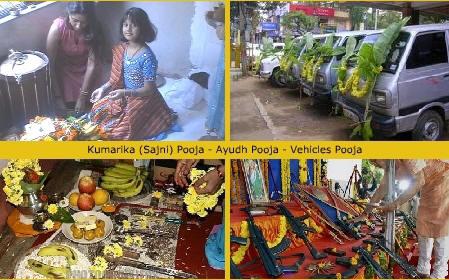
Ayudha pooja or Saraswathi Puja in Kerala
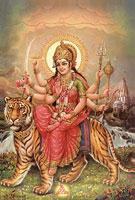
Ayudha Pooja arrangements
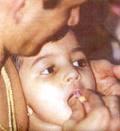
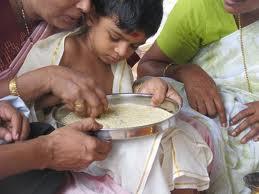
Kolu vaipu – arrangements of doll in Navarathri
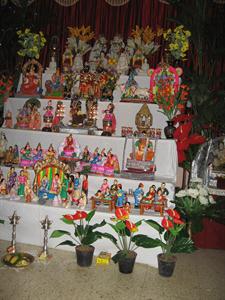
The Spiritual Significance of Dasara - Navarathri
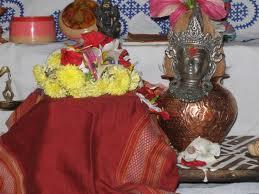
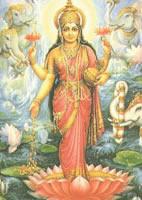
Significance of Navarathri for Householders
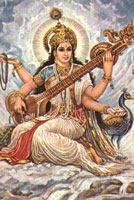
Other Names for Dasara Festival
Navarathri Festival at Sri Ananthapadmanabhaswamy Temple
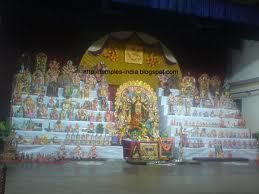
Essence of the Festival of Dussera

 Job oriented
Job oriented
Hello,
One of the good articles I have read about Navarathri celebrations,great work,great reserach..keep it up